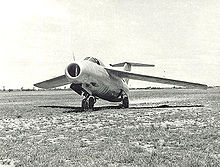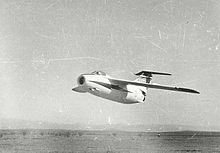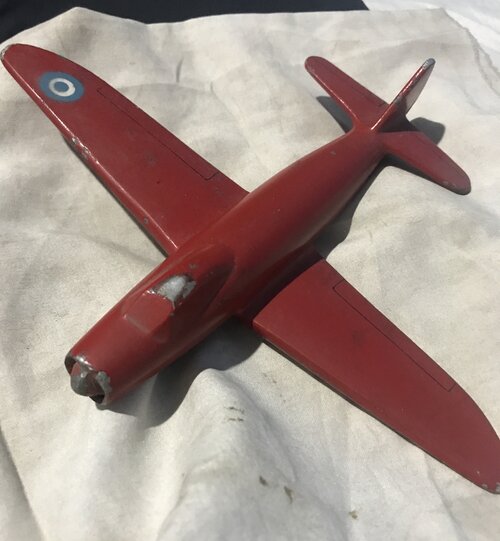Erdosain
ACCESS: Secret
- Joined
- 10 March 2020
- Messages
- 479
- Reaction score
- 1,978
Attachments
Last edited by a moderator:



Dépité, Emile Dewoitine écrit à son ami Charles Lindbergh pour proposer ses services aux Etats-Unis. Indésirable, il se voit refuser le visa d'entrée. Il vivote en mettant au point un avion de tourisme pour les aéro-clubs argentins (El Boyero), avant de partir, en 1951, offrir ses services en Uruguay.Thanks for this link, Archibald. Very interesting stories about the afterlife of all those repugnant kollabos.
Thanks for this link, Archibald. Very interesting stories about the afterlife of all those repugnant kollabos.
Sir, you continue to ignore the advice of forum members to learn how to use the forum search engine before opening a new topicThanks! I should have added that a German technician, an Auslandsdeutsche, formerly with IAME that I met in Princeton some years ago. commented:" Perón was obsessed with Germany and Germans, hence he gave priority to Tank over Horten, and to Tank over Morchio and Ricardi to Otto Behrens over Edmundo Weiss, and also to Tank's I.Aé 33 over the IAé27A
Much has been said, written and speculated about the IA 33 Pulqui II - It is time to dispel the legends that revisionist's have spread calamo currente through the years that have elapsed since the aircraft was presented amidst great fanfare.
Kurt Tank's assignment was to design a far better airplane than the Pulqui I. It had been decided from the beginning that the new fighter would be named the Pulqui II. For that Tank was very well prepared for the job. From the late 1944, his team had been working on a 2nd generation jet fighter for the Luftwaffe under the designation Ta 183 Huckebein. It was an advanced jet, extraordinarily compact in size and aerodynamically clean, sporting a 32º swept wing, and accomodating a Heinkel He S011A jet engine which would bring it to calculated maximum speed of 967 km/h at an altitude of 7000 meters.
The chosen powerplant for the Pulqui II was Rolls Royce Nene II. The Nene was more powerful than the He S011A but required a redesigned new fuselage with a larger cross-section due to it having a centrifugal rather than axial compressor. The resulting product was the IAe.33 Pulqui II. The high-mounted negative-incidence wings were swept back 40º, even more than the Ta 183. The long fuselage was perfectly circular in section with the engine buried inside right at the center of gravity. The airframe was finished off with a graceful swept-back T-shaped tail. The pilot sat in a pressurized cockpit under a teardrop canopy. Armament would include four fuselage-mounted 20mm cannon. Contrary to the previous Dewoitine design, many elements incorporated into the Pulqui II were totally new in the fields of aeronautical construction, placing the Argentinean aero industry amongst the most advanced during those years.
.
IAe.33 Pulqui II
The first prototype - was used in static tests till its destruction, thus the 2nd prototype was the first to fly. Piiorly, a an engineless glider, with the purpose of studying the aerodynamic behaviour of the airframe. Like all of his previous designs, it was Kurt Tank himself who test-flew the glider. After a series of tests, Tank arrived to the conclusion that the airframe showed no design flaws, and the construction of the powered prototype was ordered.
The first flight of the IAe.33 Pulqui II nº 2 took place on 16 June, 1950 with Osvaldo Weiss at the controls. The second flight which took place three days later was entrusted to ex-Focke Wulf test pilot Behrens. Kurt Tank also completed a good number of the test flights undertaken during the following weeks. The new aircraft proved successful in most respects, but like its "cousin" the MiG-15 it displayed some handling difficulties at the extremes of the flight envelope. Lack of operational range was another problem which wasn't solved until the fifth prototype.
The last prototype, nº 5, was a modified version to increase the operational range and wore a designation Pulqui IIe. It featured a reinforced "wet" wing containing two integral fuel tanks.
The IAe 33 Pulqui II project was inexorably linked to the machinations and fortunes of the Peronist regime.[34] Although the Fábrica Militar de Aviones was charged with bringing aviation projects to completion, constant political interference contributed to delays and disarray in aviation programs.[34] Severe economic problems led in 1951 to the Perón government using the Fábrica Militar de Aviones to build cars, trucks, and motorcycles,[35] including the IAME Rastrojero. Moreover, Tank's team was not primarily focused on the IAe 33, completing the design of the FMA IA 35 Huanquero multi-purpose aircraft (transport, trainer and reconnaissance roles), that eventually entered production at the Dirección Nacional de Fabricación e Investigación Aeronáutica (DINFIA) (Spanish: "National Directorate of Aeronautical Manufacturing and Research"). The most devastating political decision was to divert the entire manufacturing program "seemingly overnight" to automotive products and agricultural equipment, essentially closing the aviation divisions.[34] The competing DINFIA projects such as automotive manufacture served to further drain resources in time, money and personnel from the Pulqui II project.[22]

Pulqui II (No. 04), c. 1955
While Argentina's finances were extremely strained at this juncture following the economic crisis in 1953, the most serious setback to the project came in January 1955 when Tank's contract expired. He reputedly requested almost twice as much money to continue but President Perón instead canceled his contract outright.[30] Despite four years of development and trials, the IAe 33 project was still encountering teething problems and its status remained unclear although no final decision had been made to abandon a project that had reached iconic stature in the Perónist era.[3]
Operational history
In September 1955, the sole remaining Pulqui II prototype was pressed into action in the Revolución Libertadora, a coup d'état led by General Eduardo Lonardi against Perón.[36] The exact details of its participation are unknown, but when rebel forces commanded by Lonardi captured Córdoba as their first conquest, together with the Meteor F 4s fighter-bombers stationed at the Córdoba Escuela De Aviación - SACE (Military Aviation School), the IAe 33 was enlisted in the struggle.[37] After flying combat missions against Peronist stalwarts, it later appeared in a flyover during the victory parade at Córdoba celebrating the triumph of the coup over loyalist forces.[37]

Pulqui II (No. 04) possibly in camouflage, c. 1955
When the military junta came to power, the IAe 33 project was thrown into disarray. The new government released many of the leading air force staff; similarly, most of Tank's team was forced to leave Argentina with Tank himself going to India, where he worked for Hindustan Aeronautics Limited, and later developed the HF-24 Marut supersonic fighter.[37]
In 1956, the air force, in an effort to gain political support, planned a record flight from Córdoba to Buenos Aires to demonstrate the combat potential of the IAe 33. The Pulqui II would fly 800 km, strafe an air force practice range in the Buenos Aires area, and then return to Córdoba using only internal fuel. The only oxygen equipment available for such a long flight was scrounged from a FMA Meteor under repairs. Lt. Balado successfully completed the flight (including the strafing demonstration) at an average cruise speed of around 900 km/h, but the oxygen system failed on the return leg.[22] The semi-conscious pilot managed to perform an emergency landing at high speed, but the heavy landing and resulting stress broke the landing gear, with the Pulqui II overrunning the end of the runway and being damaged beyond repair.[38]

https://en.wikipedia.org/wiki/File:Pulqui_II_No.05.jpg
https://en.wikipedia.org/wiki/File:Pulqui_II_No.05.jpg
Pulqui II (No. 05) on a test flight, c. 1959
Cancellation: A legend worthy of the 1.001 Nights:
"It is a tale Told by an idiot, full of sound and fury, Signifying nothing.”
William Shakespeare, Macbeth, Act 5, Scene 5
Shortly after Balado's record flight, the Argentine Air Force reviewed its decision to acquire 100 Pulqui IIs for its fighter force. Based on the spares and wing and fuselage components at hand, the Fábrica Militar de Aviones asserted that ten aircraft could be constructed relatively quickly, however, the remainder of the order would take five years to complete. Meanwhile, plans for an alternative replacement of the hundred aging Meteor F4s obtained in the late 1940s that constituted the backbone of the Air Force continued, initially centered on the acquisition of 36 Canadair CL-13B Mk 6 Sabres, an idea which was dropped in 1956 because the Central Bank was unable to provide the necessary foreign exchange.[39]
With the Canadair Sabre no longer a viable option, the Fábrica Militar de Aviones seriously considered having the Pulqui II enter series production.[39] A new prototype was ordered in 1957, despite the United States having offered 100 combat-proven F-86 Sabre fighters with Orenda engines that were available immediately. The fifth IAe 33 Pulqui II (No. 05) prototype, designated Pulqui IIe,[20] was constructed in 1959 (visually identical to the fourth prototype although retaining the original frameless, clear canopy) and entered flight testing after its first flight on 18 September of that year,[6] with Lt. Roberto Starc at the controls.[2] The continual evolution of the Pulqui II had resulted in the design team solving its inherent instability at high angles of attack,[40] as well as increasing fuel capacity through the use of a wet wing, to provide sufficient range.[20] However the fighter was now not only considered obsolete,[22] but also politically tainted due to its association with Perón.[41]
Consequently, the Argentine government decided to cancel the IAe 33 project at the zenith of its development, instead acquiring second-hand F-86F-40 Sabres from the United States at a "bargain-basement price" under the Mutual Defense Assistance Act. Finally, in September 1960, Argentina received only 28 aircraft, in poor condition and without the promised Orenda engine.[22]
The government-controlled press highlighted the new
The Sad Reality
Two Rolls Royce Nene II engines were acquired in 1948-9, followed by two additional in January 1951. Furthermore, the manufacturer further stated in a letter forwarded to me in 2007 that THE IAME never acquired acquired the rights to build that engine under license, and that the so-called Jet Engine factory merely assembled the Rolls Derwent 5s from imported components.
The North American F-86F Sabre
In 1957, the Argentine Air Force was offered the Republic F-84G as replacement of its Gloster Meteor aircraft, while the Argentines wanted Lockheed F-104 Starfighter, which at over US $ 300.000 a piece was a luxury the Argentine economy could not afford. The U.S./ then offered a small batch of North American F-86Es, and the Argentines eventually settled for the F-86F, 28 if which were eventually delivered., after these aircraft were reconditioned and Argentine pilots underwent training courses in the U.S. The assumption that they were promised "100 Sabres with Orenda engines" (sic) is merely a phantasy, since this was the power plant employed by the Canadair -built Sabres... As is the pretense that "they were received in poor condition". They arrived with enough spares for five years. In March 1962, in The Inter American Gunnery Contest held at Las Lajas.in the province of Neuquén, against F-86Fs of the U.S. National Air Guard and the Peruvian AF, the Argentines won by a wide margin (973,5 points, vs 852 for the U.S. team.
`Onne of the myths published by the government-controlled press (P.B.T Magazine, June 1954) was that:" A series of 10 Pulqui IIs would soon be distributed to units of the Air Force". In fact, as we have seen, only four Nene engines were available, and two of these powered the ill-fated 2nd and 3rd. prototypes. Furthermore``, Tank envisaged a more powerful Power plant for subsequent prototypes of the Pulqui II and in October 1950, the Argentine Embassy in Washington requested prices and details for two Alisson Tye 400, 400 M and 400R turbo engines, or two Pratt & Whitney J-48s. But Washington never replied. The election of Dwight D. Eisenhower to the presidency of the U.S. signaled an era of improved relations between Buenos Aires and Washington. On a meeting held with Alfred Nuffer, the U.S. Ambassador in Buenos Aires, Perón discussed the possibility of enlisting American aid for the development of ship-building plants and dry docks as well as assistance in building a plant to produce fighters in a large scale, which would be far beyond the range of Russian aircraft. The plant Perón visualized would be able to produce complete aircraft, including engines, adding that in the event of war, Argentina would place the production of such a plant at the disposal of the U.S. Nuffer referred the matter to Washington, but any hopes Perón may have entertained were dashed when Washington did not accede to his request.
The design of the airbrakes always amazed me, way different to what was used on the Sabre or the MigsDrawing of the pulqui II with different types of airbrakes evaluated in different positions
View attachment 693955

Wahoo, nice pic !!!Another pic of The Pulqui I...
